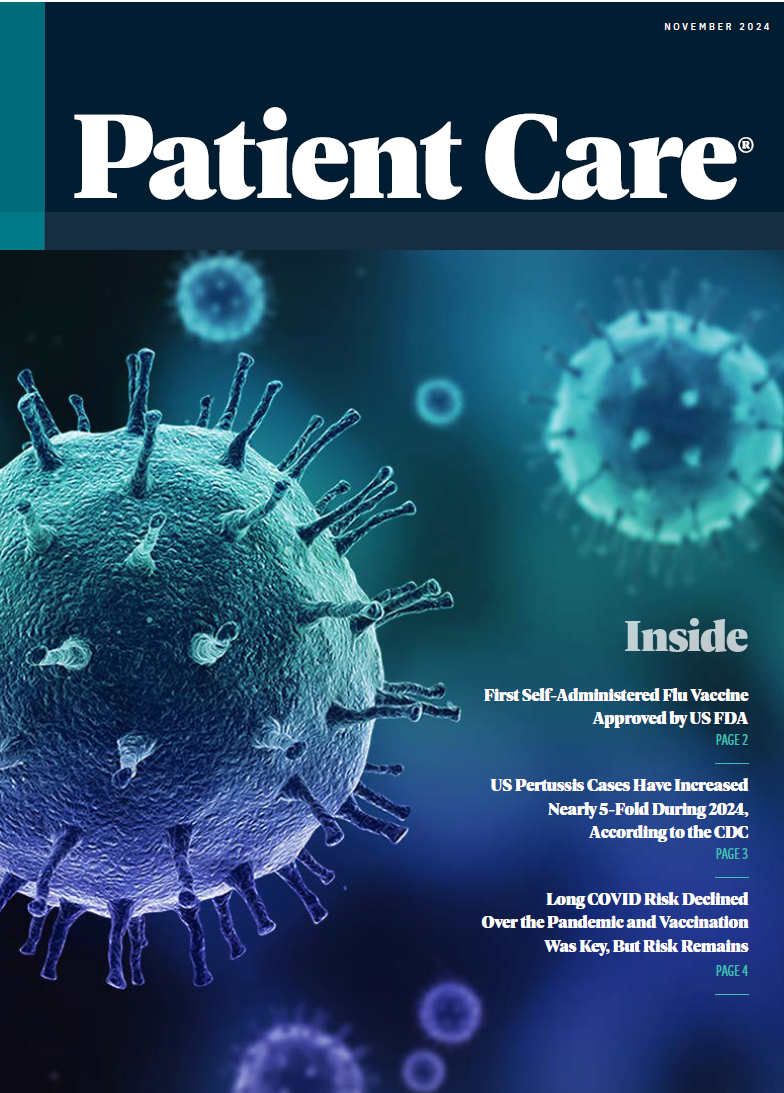Long COVID Risk Declined Over the Pandemic and Vaccination was Key, But Risk Remains
Ziyad Al-Aly, MD, and colleagues link 70% of the drop in cases to vaccine availability but caution the risk for long COVID remains significant.
The risk of developing long COVID appears to have decreased substantially over the course of the COVID-19 pandemic, according to a large analysis led by researchers from Washington University School of Medicine in St Louis.1
Researchers attributed approximately 70% of the risk reduction to vaccination against COVID-19 and 30% to the evolving characteristics of the virus as new strains emerged and to improved detection and management of the SARS-CoV-2 infection. But while the news is good on its face, study authors say the risk is still real.1
©PXmedia/stock.adobe.com

The study, published in the New England Journal of Medicine on July 17, compared health records from the US Department of Veterans Affairs for 441 583 veterans with SARS-CoV-2 infection between March 2020 and January 31, 2022, and 4 748 504 uninfected controls. Investigators, led by Ziyad Al-Aly, MD, director of the Clinical Epidemiology Center, and chief of the research and education services at the VA Saint Louis Health Care System, looked specifically at the rates of long COVID 1 year after virus infection during 3 phases of the pandemic: pre-delta (before vaccines were available), the domination of the delta variant, and the period of the omicron variant (beginning December 2021).
Al-Aly and colleagues reported the cumulative incidence of long COVID at 1-year post-infection decreased from a high of 10.42 cases per 100 persons among unvaccinated participants during the pre-delta era to a low of 3.50 cases per 100 persons among vaccinated individuals during the later omicron era.
Looking more closely at vaccinated vs unvaccinated individuals by variant era, 10.42 out of 100 developed long COVID 1 year after infection in the early pandemic months, before vaccines were available. With the arrival and tenure of the delta variant (June 19, 2020, through December 18, 2021) slightly fewer unvaccinated people (9.51 out of 100)received a long COVID diagnosis but just slightly more than half that many who were vaccinated (5.34 out of 100), were diagnosed a year after infection resolved. In the omicron era (began December 19, 2021) long COVID was diagnosed in 7.76 out of 100 unvaccinated people but only in 3.5 out of 100 vaccinated individuals.
The cumulative incidence of long COVID at 1 year was lower per 100 people among vaccinated compared with unvaccinated persons (average difference across delta and omicron eras, -4.22 events).
When they conducted decompensation analyses of the change in cumulative incidence of long COVID over the study period, the team found there were 5.23 fewer long COVID diagnoses per 100 persons 1-year post-infection during the omicron era than during the pre-delta and delta eras combined. Al-Aly and colleagues calculated that 28.11% of the decrease could be attributed variant characteristics during each era while the remainder of the difference, 71.89%, was related to the effect of vaccines.

"These findings suggest that vaccine uptake will be key to maintaining the lower cumulative incidence of PASC [postacute sequelae of severe acute respiratory syndrome] relative to earlier phases of the pandemic," the team wrote. However, Al-Aly also emphasized that even with the overall decline, the lowest rate of long COVID among vaccinated individuals— 3.5% — remains a substantial risk. “That’s three to four vaccinated individuals out of 100 getting long COVID,” he said. “Multiplied by the large numbers of people who continue to get infected and reinfected, it’s a lot of people. This remaining risk is not trivial. It will continue to add an already staggering health problem facing people across the world.”2
“We need to double down on our efforts to understand it so we can prevent suffering and treat affected individuals.”2
The Centers for Disease Control and Prevention estimates that 6.4% of US adults have experienced long COVID, with prevalence ranging from 1.9% to as high as 10.6% across the country.3 Symptoms can be lingering versions of those experienced during the acute infection or can be altogether new; temporally they can follow resolution of the infection immediately or emerge weeks, even months, after what appears to be recovery from the acute illness. The symptoms range from irritating to debilitating and manifest in persons whose infection was mild or even asymptomatic in addition to those who were hospitalized and critically ill.4
Research to date has documented more than 200 symptoms associated with long COVID, the most familiar of those including fatigue, post exertional malaise, heart palpitations, blood clots, hair loss, persistent cough, loss of lung function, muscle pain and joint aches, brain fog, headache, depression, anxiety, sleep disturbances, loss of smell, and gastrointestinal problems.5
Individuals who have had COVID-19 may also be more likely to develop new health conditions including diabetes, cardiovascular disease, blood clots, and neurologic disorders.4
Among the study’s limitations Al-Aly et al note that the homogeneity of the VA population, ie, older White men, may preclude generalization of the findings to other groups; also, the observational nature invites residual confounding and misclassification bias.1
